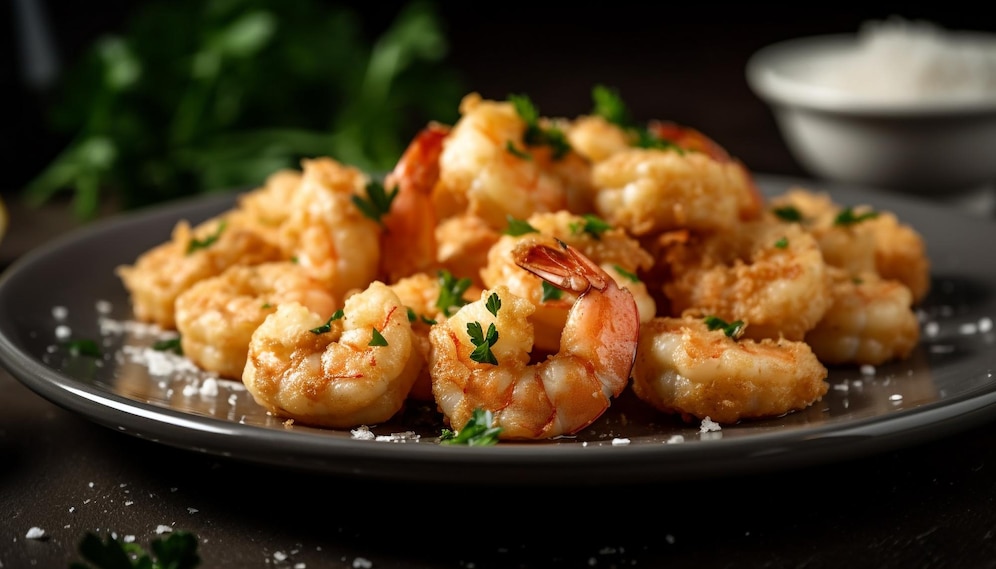Do you think that shrimp and prawns are the same creatures? Surprise, surprise! These two seafood delicacies have more differences than meets the eye. From their appearance to how they taste, these crustaceans have distinct features that set them apart. So let’s discover together how different shrimp and prawns are by exploring what makes them unique in this blog post on the remarkable difference between shrimp and prawns.
Overview of Shrimp and Prawns – what they are, their similarities, and differences
For seafood lovers, shrimp and prawns are two names that come up frequently. Although both fall under the crustacean family, they have distinct differences that set them apart.
Shrimp are typically smaller and have a curved shape, while prawns are larger and straighter. Both have a sweet, mild taste and are commonly used in stir-fry, paella, and scampi dishes.
Despite their differences, shrimp and prawns are both highly nutritious, low in calories, and high in protein. So whether you’re a die-hard shrimp fan or a prawn lover, you can’t go wrong with either one!
Anatomy Comparison Between Shrimp and Prawns
It’s no secret that both shrimp and prawns are delicious. But have you ever wondered about their structural differences? Let’s dive into the anatomy of these popular crustaceans. While they both have elongated bodies and long antennae, prawns typically have claws on three of their five pairs of legs, while shrimp only have two.
Additionally, prawns tend to be larger, with a distinctive body bend. However, it’s a matter of personal preference regarding taste. Whether you’re team shrimp or team prawn, one thing is certain – these creatures are fascinating to compare and contrast.
Habitat Differences Between Shrimp and Prawns
Shrimps and prawns are both delicious seafood choices, but their habitats have some significant differences.
Shrimps thrive in warmer waters, typically found in tropical regions, while prawns are found in cooler temperatures, usually in colder oceans or river systems. Shrimps live in shallower waters, while prawns are found in deeper areas. These differing habitats can also impact their physical characteristics, with prawns often growing larger than shrimp due to their environments.
Understanding these habitat differences is crucial in ensuring these animals are sustainably sourced and protected for future generations.

Nutritional Facts About Shrimp and Prawns
Shrimp and prawns are considered to be some of the most delicious seafood dishes around the world. In addition to their delicious taste, they’re also rich in different nutrients essential for good health.
Shrimp, in particular, is a great source of protein, vitamins, and minerals. They also contain low amounts of fat and carbs, which makes them an excellent option for those on a low-calorie diet.
On the other hand, Prawns contain high amounts of Omega-3 fatty acids, promoting heart health. You can also reheat prawns in a microwave oven without compromising their nutrition.
So, whether you prefer shrimp or prawns, both are loaded with nutritional benefits that will make your body happy and healthy.
Different Types of Dishes that Use Shrimp or Prawns as Ingredients
Shrimp and prawns are versatile ingredients that can be used in many dishes. From classic shrimp cocktails to more exotic dishes like Thai shrimp curry, there is no shortage of delicious ways to prepare these flavorful crustaceans. Shrimp scampi is a classic Italian dish beloved for its garlic butter sauce and tender shrimp, while Cajun-style shrimp gumbo is a spicy Creole stew perfect for chilly nights. Try a shrimp and avocado salad with a zesty lime dressing for something light and fresh.
Whether you prefer your shrimp grilled, sautéed, or fried, a shrimp or prawn dish will satisfy your cravings.
Preparing Shrimp and Prawns for Cooking – proper cleaning techniques, storing tips, etc.
Shrimp and prawns are delicious and versatile seafood that can be prepared in countless ways. Before cooking, it is essential to clean them thoroughly to remove any dirt or sand that may have accumulated.
One effective way to do this is to rinse them in cold running water and pat them dry with a paper towel. It is best to store them in the hardest part of the fridge, preferably at a temperature below 40°F. If you bought them fresh, cooking them within two days is recommended. Frozen shrimp and prawns are suitable for up to six months.
Whether you decide to sauté, grill, or boil them, properly prepare them to ensure maximum flavour and optimal cooking results.

Conclusion
All in all, shrimp and prawns are delicious and nutritious seafood options that can be enjoyed in various ways. With their many similarities, it may be hard for the average person to differentiate between them. Nevertheless, the critical thing to remember is that while there are essential distinctions between them, such as their anatomy and habitats, shrimp and prawns have similar nutritional values and can be cooked in various dishes, from sushi to stir-fry. So if you’re looking for another seafood alternative to mix up your weekly rotation of meals, then look no further than the tantalising flavours of prawns and shrimp!

